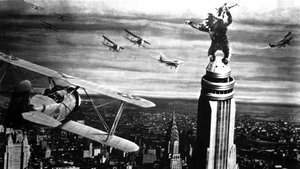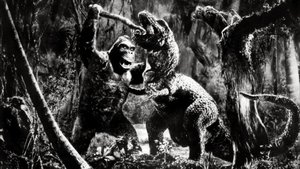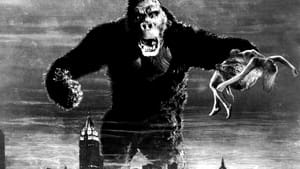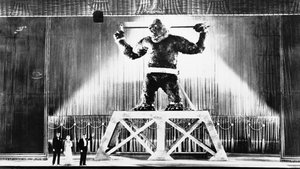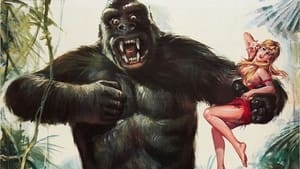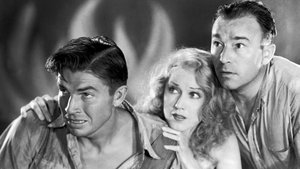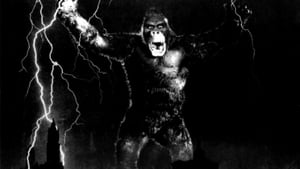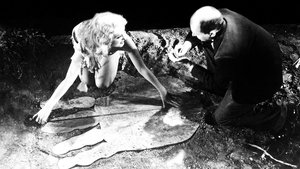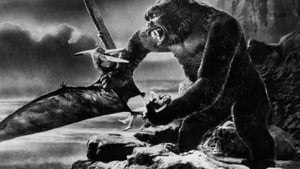Video Sources 0 Views
- Watch trailer
- King Kong 1933 Colorized

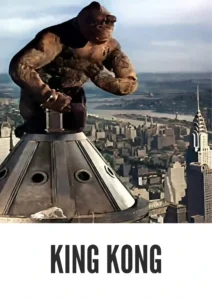
Synopsis
Table of Contents
ToggleRoaring Back to Life: King Kong (1933) in Spectacular Color

Step into the thrilling world of King Kong, a monumental monster adventure epic from 1933, now brilliantly colorized for an unprecedented viewing experience. Starring the iconic Fay Wray and Robert Armstrong, this film delivers a breathtaking blend of adventure, horror, and groundbreaking special effects. Perfect for classic film aficionados and those seeking a grand spectacle, this HD download brings the timeless tale of Kong to life like never before.
King Kong Storyline: An Expedition to the Unknown
King Kong tells the story of a film crew, led by the ambitious director Carl Denham (Robert Armstrong), who venture to the mysterious Skull Island to shoot a movie. Unbeknownst to them, the island is inhabited by prehistoric creatures and a giant ape known as Kong.Upon arrival, the crew encounters the island’s native population, who kidnap actress Ann Darrow (Fay Wray) as a sacrifice to Kong. Kong is captivated by Ann and takes her deep into the jungle. Denham and his crew pursue Kong, leading to a series of perilous encounters with dinosaurs and other monstrous creatures. Eventually, they capture Kong and bring him back to New York City, where he is put on display. However, Kong escapes, wreaking havoc on the city as he searches for Ann, leading to the iconic climax atop the Empire State Building. King Kong is a thrilling and tragic tale that explores themes of nature versus civilization, beauty and the beast, and the consequences of human ambition.
Movie Cast
The film features a memorable cast of actors who bring this extraordinary story to life:
- Fay Wray as Ann Darrow
- Robert Armstrong as Carl Denham
- Bruce Cabot as Jack Driscoll
- Frank Reicher as Captain Englehorn
- Sam Hardy as Charles Weston
Movie Genre
King Kong falls into the genre of a monster adventure epic, blending elements of horror, fantasy, and adventure. Its groundbreaking special effects and timeless story have made it a cinematic landmark.
Historical Context: Groundbreaking Special Effects and Cinematic Impact
Released in 1933, King Kong was a groundbreaking achievement in special effects, utilizing stop-motion animation and miniature sets to create a world of incredible realism. The film had a profound impact on the science fiction, fantasy, and horror genres, influencing countless filmmakers and inspiring numerous adaptations and remakes. King Kong remains a cultural touchstone, celebrated for its innovative techniques and enduring themes.
Colorization Details
This colorized version of King Kong has been meticulously restored using modern digital techniques, enhancing the visual impact while preserving the film’s original atmosphere of wonder and terror. The colorization process involved carefully analyzing the grayscale tones of the original black and white footage and assigning appropriate colors to each scene. While the specific software used remains proprietary, the techniques employed included advanced algorithms for color palette selection and image enhancement. This painstaking process breathes new life into the characters and settings, making the story even more captivating for modern audiences. While the colorization of classic films remains a topic of debate, it introduces these films to a broader audience, ensuring their legacy for future generations.
Technical Details
- Directors: Merian C. Cooper, Ernest B. Schoedsack
- Screenwriters: James Ashmore Creelman, Ruth Rose
- Story by: Merian C. Cooper, Edgar Wallace
- Cinematography: Kenneth MacGowan, J.O. Taylor, Vernon L. Walker
- Edited by: Ted Cheesman
- Production Company: RKO Radio Pictures
- Distributed by: RKO Radio Pictures
- Runtime: 100 minutes
Technical Specifications
- Download Format: MP4
- Resolution: HD (1080p)
- Compatibility: Compatible with most devices, including smartphones, tablets, computers, and smart TVs.
Reviews and Critical Reception
King Kong (1933) is widely regarded as one of the greatest films of all time, celebrated for its groundbreaking special effects, memorable characters, and timeless story. It has been praised for its innovative techniques, its emotional depth, and its enduring impact on popular culture. King Kong remains a cinematic landmark, inspiring awe and wonder in audiences of all ages.
FAQs
- Q: What is King Kong about?
- A: King Kong is about a film crew who encounter a giant ape on Skull Island and bring him back to New York City, where he wreaks havoc.
- Q: Is King Kong (1933) considered a classic film?
- A: Yes, King Kong is widely regarded as one of the greatest films of all time.
- Q: Is this version of King Kong colorized?
- A: Yes, this version has been professionally colorized to enhance the viewing experience.
- Q: What makes King Kong so special?
- A: King Kong is special for its groundbreaking special effects, its memorable characters, and its timeless story.
- Q: What is the download format?
- A: The download format is MP4, which is compatible with most devices.
- Q: What resolution is the download?
- A: The resolution is HD (1080p), providing a high-quality viewing experience.
Download Now in HD!
Watch King Kong Today!
